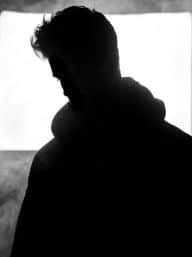Atticus Starts With a Name
Atticus is a name with a Greek-Latin pedigree. It means “of Attica,” the region around Athens. We would translate it as “Athenian” today. The Roman orator Cicero wrote a series of letters to a good friend named Atticus, and the letters are one of the main reasons why we know as much as we do today about the orator. Much closer to our own time, the name gained a bit of fame from the character of Atticus Finch in Harper Lee’s To Kill a Mockingbird, becoming a popular name for parents to give to boys. That is, until the sequel, Go Set a Watchman, was published, in which Atticus was something less heroic.
It also happens to be the pen name of an anonymous poet, about whom little is known. He is described as a storyteller and author. He has published three collections of poetry: Love Her Wild: Poems (2017), The Dark Between Stars (2018), and The Truth About Magic: Poems (2019). His author description on his books says he chooses to remain anonymous “to remind himself to always write what he feels instead of what he thinks he should feel.” He’s reported to have been born in Vancouver in British Columbia, and he “loves the ocean, the desert, whisky, and playing with words.”
You also need to know he has 1.6 million followers on Instagram (@atticuspoetry). Many of the poems published in book form first saw the light of day on the social platform. He combines words with photographs and artwork to pack a powerful, memorable punch. Most of his poems in The Dark Between Stars are relatively short, containing three to 10 lines; a few are slightly longer. Sometimes they’re more like aphorisms: “It’s hard to be mad at the world / nearby the miracle / of a hummingbird’s wings.” All of the poems are untitled, grouped into three sections: “Stars,” “Between,” and “The Dark.”
And most of the poems, almost all of them, are love poems, like this one from “Between.”

in the front seat
of an old Cadillac
we were two kids chasing sunsets
holding on to memories—
all the ways you were
I wish I could’ve bottled up
that feeling
drinking it now that
you are gone.
The only punctuation you’ll find in these poems is the period at the end of the last line. He writes about love, current and past; experiencing love in a city like Paris; losing love; being nostalgic for a lost love; and finding love all over again. This collection is a celebration of both love and the feeling of being in love. There’s no question that love is what Atticus is about: “The problem with falling in love / is that everything else in life / becomes boring by comparison.”

Atticus
The poems of Atticus emphasize the visual. In addition to using photographs and artwork, the collection makes impressive use of white and black pages. They almost sneak up on you unexpectedly, helping to emphasize their poetic message.
Atticus is one of several popular Instagram poets, along with Rupi Karr, R.H. Sin, Incognito (another anonymous poet), Nikita Gill, and others. Many of them publish love poems, but Atticus focuses almost exclusively on it. To read The Dark Between Stars is to take a journey with a (presumably) young poet, one who’s often almost drunk on love but enchants the reader (and himself) with images, feelings, experiences, and insights.
He does include the occasional dose of realism: “A soul mate would be great, / but at some point / I’d settle for someone who gets back to text messages.”
Photo by Pai Shih, Creative Commons, via Flickr. Post by Glynn Young.
How to Read a Poem uses images like the mouse, the hive, the switch (from the Billy Collins poem)—to guide readers into new ways of understanding poems. Anthology included.
“I require all our incoming poetry students—in the MFA I direct—to buy and read this book.”
—Jeanetta Calhoun Mish
- Poets and Poems: Beth Copeland and “I Ask the Mountain to Heal My Heart” - July 10, 2025
- A.E. Stallings: the Parthenon Marbles, Poets, and Artists - July 8, 2025
- Poets and Fables: Steven Flint and “The Sun and the Boy” - July 3, 2025


Bethany R. says
Thanks for this, Glynn. 🙂 I do like the idea of presenting a photograph/artwork with a poem (like Every Day Poems does). Sometimes a photo can prompt a poem, and sometimes it becomes an essential note in the poem’s chord. I wonder if it would be fun to try some sort of flexible, ekphrastic-type of poetry challenge? Maybe just based on our own everyday photos? 🙂
Maureen says
Bethany, take a look at our ‘Imag- ine’ series using Lisa Hess Hesslegrave’s artwork.
Bethany says
Oh, thank you, Maureen! 🙂